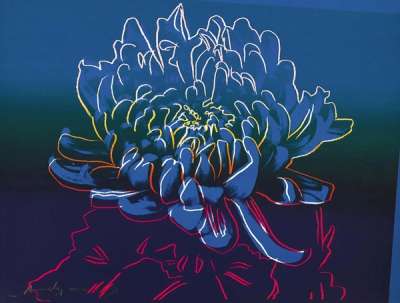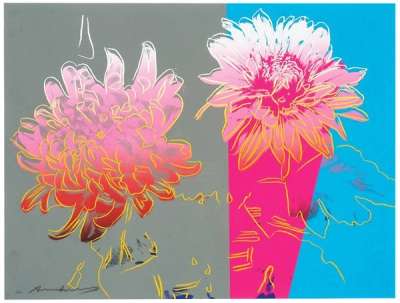
Kiku (F. & S. II.309)

Kiku (F. & S. II.309)
Signed Print
Andy Warhol
£20,000-£30,000Value Indicator
$40,000-$60,000 Value Indicator
$35,000-$50,000 Value Indicator
¥190,000-¥290,000 Value Indicator
€23,000-€35,000 Value Indicator
$200,000-$300,000 Value Indicator
¥3,740,000-¥5,620,000 Value Indicator
$26,000-$40,000 Value Indicator
AAGR (5 years) This estimate blends recent public auction records with our own private sale data and network demand.
There aren't enough data points on this work for a comprehensive result. Please speak to a specialist by making an enquiry.
Medium: Screenprint
Edition size: 300
Year: 1983
Size: H 48cm x W 66cm
Signed: Yes
Format: Signed Print
TradingFloor
Track this artwork in realtime
Watch artwork, manage valuations, track your portfolio and return against your collection
Track auction value trend
Auction Results
| Auction Date | Auction House | Location | Hammer Price | Return to Seller | Buyer Paid |
|---|---|---|---|---|---|
| March 2024 | Bonhams Los Angeles | United States | |||
| March 2024 | Sotheby's London | United Kingdom | |||
| March 2024 | Forum Auctions London | United Kingdom | |||
| November 2022 | Bonhams New York | United States | |||
| March 2022 | Sotheby's Online | United Kingdom | |||
| September 2021 | Sotheby's Online | United Kingdom | |||
| July 2019 | Sotheby's New York | United States |
Meaning & Analysis
Kiku (F. & S. II.309) is a screen print from Andy Warhol’s Kiku series (1983). Warhol’s career-long fascination with flowers prompted Fujio Watanuki, the founder of the Gendai Hanga Centre in Tokyo, to commission the series based on the motif of the Japanese flower,chrysanthemum (‘kiku’ in Japanese). This print shows a delicate display of seven overlapping chrysanthemums, symbols for Japanese imperial power, rendered in his classic aesthetic of colour-field patterning and precious multi-coloured silhouettes.
Kiku (F. & S. II.309) contrasts with Warhol’s earlier iterations of flower subjects as it exhibits a peaceful, elegant atmosphere and is created on a much smaller scale so as to adhere to conventional Japanese living spaces. As well as symbolising the Japanese Emperor, the chrysanthemum is representative of longevity, rejuvenation and the autumn season. This is reflected in Warhol’s harmonising colour choice of pink, green, purple, blue and red hues and emphasis on hand drawn lines that overpower the photographic element of this piece.
First visiting Japan in 1956 whilst travelling around the world, Warhol returned for a second time in 1974 for a solo exhibition at the Daimaru Department Store. This series is indicative of Warhol’s global influence and that he was much admired by Japanese collectors and gallerists.


